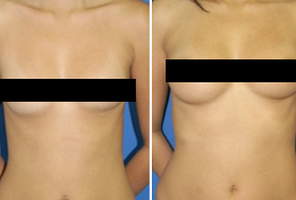
Rhinoplasty is surgical reshaping of the nose. The term rhinoplasty includes a wide variety of different procedures used to correct a multitude of cosmetic defects. Rhinoplasty is one of the most common cosmetic procedures performed; however, it is considered to be the most difficult procedure in plastic surgery as the nose is a complex structure made up of interconnecting small bones and cartilage. People choose to have rhinoplasty fora variety of reasons including making the nose smaller, larger, thinner, or flatter. Most people seek to have the procedure to change the bridge of the nose, the tip of the nose, or both. Some people choose rhinoplasty after an injury or because of a birth defect. Finally, some people have rhinoplasty to improve breathing problems related to the internal structure of the nose.
How is the procedure performed?
Rhinoplasty describes a group of procedures which are chosen based both on your individual anatomy and preferences. In consultation with your surgeon, you will decide which procedures are right for the correction that you seek. For example some of the techniques used to reshape the nose include re-contouring of the nasal bones (the bridge), rebuilding the nasal bones, reshaping of the cartilaginous part of the nose, shortening of the septum (the wall between the nostrils), and placement of grafts in the nose. Often, much of the work is performed from inside the nose. However, some procedures are best performed using incisions on the outside of the nose. The details of these procedures are beyond the scope of this discussion. However, it is important that your surgeon discusses the procedures that she recommends in detail before you chose to have the surgery. Rhinoplasty can be performed under general anesthesia or under local anesthesia with sedation. There are benefits to using local anesthesia such as a faster recovery and less cost. However, not all patients are able to tolerate being awake through such an invasive procedure. Once you have been sedated or anesthetized, the surgeon will use local anesthesia to numb the entire nose. The procedure/s will then be performed, the incisions will be sutured and usually the nose will be packed with dressing material. Splits will then be taped into place. More Rhinoplasty Facts...
What is the recovery period like?
Recovery depends in part on the kind of anesthesia used, the procedure performed, and your ability to heal. Initially, you will be unable to breathe through your nose. Often, you will be given prescriptions for antibiotics, pain medication, and nasal spray. Icepacks are routinely used to reduce swelling. Usually, your first follow up visit is 24 hours after your surgery at which time the intranasal dressing is removed. Your second follow up visit is usually 5-7 days after your surgery. Sutures and splits are usually removed at this visit. Bruising and swelling are normal parts of the recovery process. Most people return to work 1-2 weeks after rhinoplasty. Full activity such as contact sports are not allowed for at least 4 weeks. Most of the swelling is usually gone after a few weeks but subtle swelling can last for months. More Rhinoplasty Facts...
What are the risks of the procedure?
Risks vary depending on which procedures are used and on whether or not you have general anesthesia. In general, the most important part of any cosmetic procedure is understanding what to expect and what the potential complications are. Some of the common complications are discussed below; however, you and your surgeon will need to discuss the specific risks in detail. Early postoperative complications include bleeding, infection, swelling, nose bleeds, and bruising. It is imperative to stop any medications (prescription and over the counter) prior to rhinoplasty to decrease the risk of bleeding. In most cases, bruising resolves in 2-4 weeks. Swelling can take months or even years to completely resolve. Dilated blood vessels (telangiectasias) are a minor skin complication. Necrosis (death) of the nose skin is a rare but devastating risk. Cosmetic complications include saddle-nose deformity (sunken bridge), knob-like protuberances (called bossae), polybeak formation (excessive fullness of the tip), and excessive scarring. Revisions are needed in 5-10% of cases. More Rhinoplasty Facts...
How much does nose surgery cost?
Nose surgery costs vary from doctor to doctor depending on other fees such as anesthesia and operating fees. According to the American Society for Aesthetic Plastic Surgery, the average nose surgery costs in 2004 was $4,047. More Rhinoplasty Facts...
Disclaimer:
This information is intended only as an introduction to this procedure. This information should not be used to determine whether you will have the procedure performed nor does it guarantee results of your elective surgery. Further details regarding surgical standards and procedures should be discussed with your physician.

